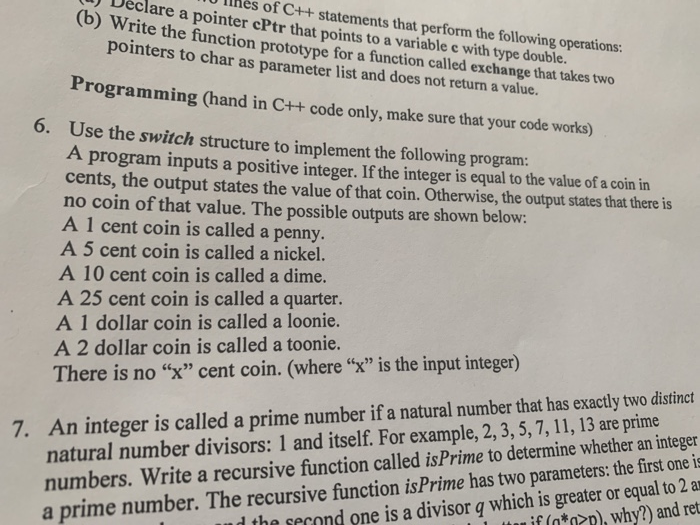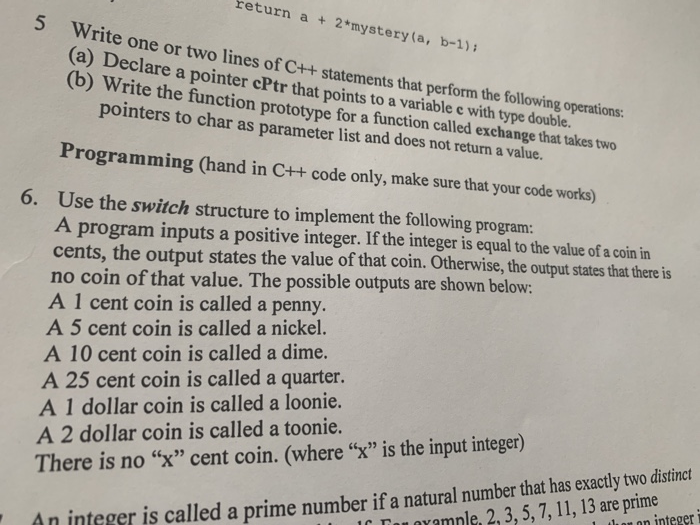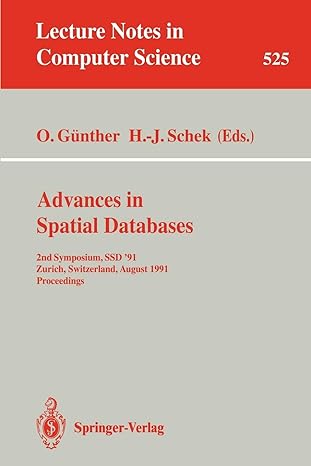
return a 2*mystery(a, b-1): 5 Write one or two lines of C++ statements that perform the following operations (a) Declare a pointer ePtr that poin (b) Write the function prototype for a function called exchange that takes two ts to a variable e with type double. pointers to char as parameter list and does not return a value. Programming (hand in C++ code only, make sure that your code works) 6. Use the switch structure to implement the following program: A program inputs a positive integer. If the integer is equal to the value of a coin in cents, the output states the value of that coin. Otherwise, the output states that there is no coin of that value. The possible outputs are shown below: A 1 cent coin is called a penny. A 5 cent coin is called a nickel. A 10 cent coin is called a dime. A 25 cent coin is called a quarter. A 1 dollar coin is called a loonie. A 2 dollar coin is called a toonie. There is no "X"cent coin. (where "X"is the input integer) lu an o integer i IC Dau aramnle, 2,3,5, 7, 11, 13 are prime An integer is called a prime number if a natural number that has exactly two distinct l) Declare (b) Wr a pointer cPtr that points to a variable e with type double. ite the function prototype for a function called exchange that takes two lRes of C++ statements that perform the following operations: pointers to char as parameter list and does not return a value. Programming (hand in C++ code only, make sure that your code works) 6. Use the switch structure to implement the following program: A program inputs a positive integer. If the integer is equal to the value of a coin in cents, the output states the value of that coin. Otherwise, the output states that there is no coin of that value. The possible outputs are shown below: A 1 cent coin is called a penny. A 5 cent coin is called a nickel. A 10 cent coin is called a dime. A 25 cent coin is called a quarter. A 1 dollar coin is called a loonie. A 2 dollar coin is called a toonie. There is no 'x', cent coin. (where "X"is the input integer) An integer is called a prime number if a natural number that has exactly two distinct natural number divisors: 1 and itself. For example, 2, 3, 5, 7, 11, 13 are prime numbers. Write a recursive function called isPrime to determine whether an integer 7. a prime number. The recursive function isPrime has two parameters: the first one i, if (in, why?) and ret d the second one is a divisor q which is greater or equal to 2 a








